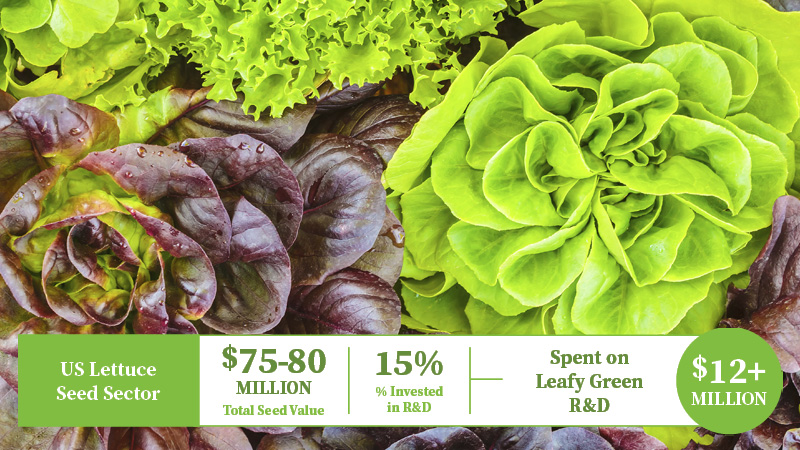Can Robotic Transplanters Pick Up the Pace for Plant Cuttings?
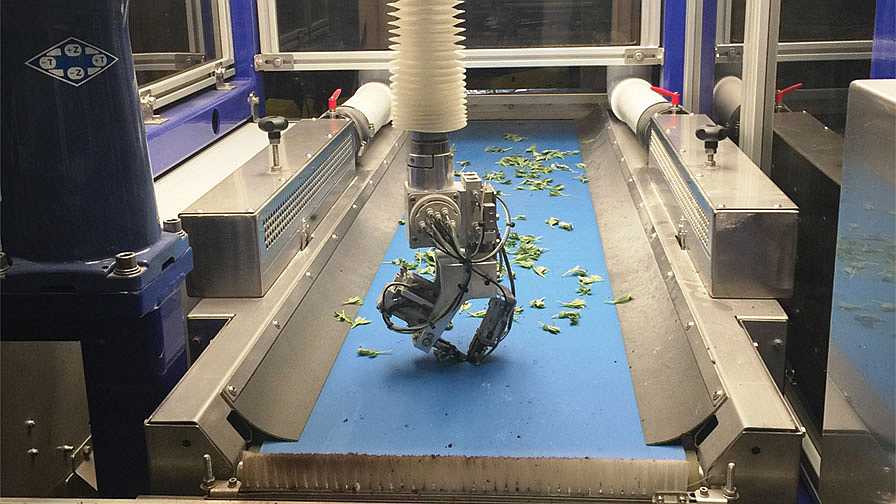
Feasibility of robotic transplanters are being evaluated for the floriculture sector. Stands to reason this technology would have applications for greenhouse vegetable cuttings, too. With the ISO Group robot (seen above), plant cuttings are emptied by the operator onto a conveyor belt, and a computerized camera identifies the top and bottom orientation of the cutting.
Over the coming year, as part of the Floriculture Research Alliance, University of Florida graduate student Ulrich Adegbola is collecting labor and cost data from four growers using transplant robots.
Two automation options have been introduced to the greenhouse industry so far from ISO Group and Visser.
With the ISO Group robot, cuttings are emptied by the operator onto a conveyor belt, and a computerized camera identifies the top and bottom orientation of the cutting. A robotic arm picks up each cutting and places it into a tray on a second conveyor.
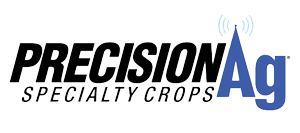 We have observed that 0.8 to one operators were required per ISO Group machine at the four greenhouses visited, with most locations achieving on average 2,000 cuttings transplanted per hour.
We have observed that 0.8 to one operators were required per ISO Group machine at the four greenhouses visited, with most locations achieving on average 2,000 cuttings transplanted per hour.
With the Visser Auto-Stix machine, cuttings are placed into a biodegradable plastic strip at the offshore cutting farm where labor is cheaper. Loaded strips are then shipped to the propagation greenhouse, where the transplanter clips the strips into individual plant units, which are transplanted into trays. Reports we have seen for Auto-Stix indicate that three operators per machine are needed to achieve the expected production of 7,500 cuttings per hour.
The Auto-Stix has a higher capacity of cuttings per hour, but requires more operators per machine, has an additional cost of $0.02 per cutting to load and ship cuttings, and relies on low-cost offshore labor to load unrooted cuttings into the strip.
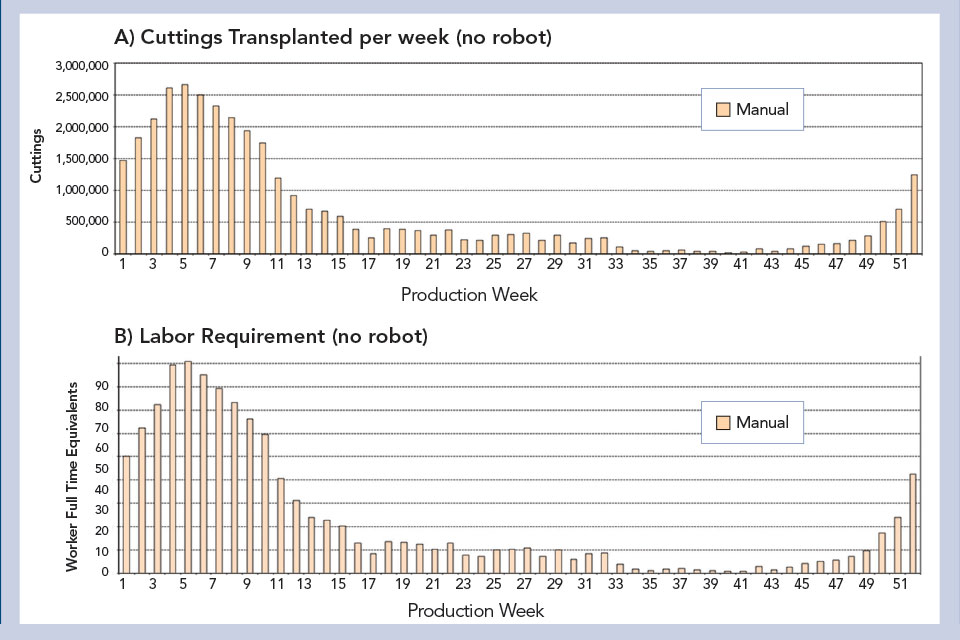
These charts show a greenhouse scenario with no robotic transplanters and all manual labor, showing the cuttings transplanted each week (A), and the number of worker full time equivalents required to manually transplant cuttings (B).
Customized Analysis is Needed
Every grower’s situation is different with respect to the labor cost tradeoff for evaluating robotic transplanters. Robotics manufacturers can provide costing spreadsheets to evaluate return on investment. Work out your own cost to transplant cuttings manually as a point of comparison — in our grower survey it averaged $0.018 per cutting. Figure A shows the average number of cuttings transplanted per week by five U.S. young plant growers.
This cutting number would require up to 91 full-time-equivalent (FTE) workers, assuming a 40-hour week and 732 cuttings per hour (29,280 cuttings per 40 hour week, Figure B).
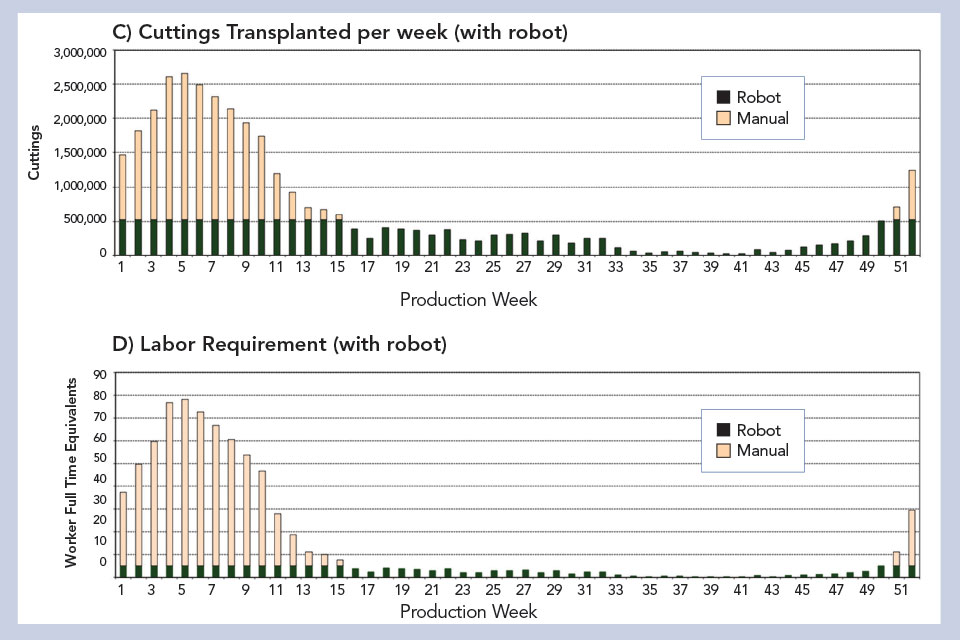
The second scenario (C and D) shows the effect of adding automation with the capacity to transplant 7,500 cuttings per hour running for up to 70 hours per week (525,000 cuttings per week).
Figures C and D show a scenario where a grower has invested in automation with a capacity of 7500 cuttings per hour with three operators. In this scenario, if the automation runs for 70 hours per week (two shifts), then the maximum cuttings per week would be 525,000. This is just one scenario — the grower could purchase additional robots to further reduce labor requirement at the peak. This would, however, also increase both capital investment cost and the time that each machine is not used to capacity during the off-season.
Run the Numbers for Yourself
Estimating the cost per cutting or payback on this investment depends on your own situation. Other than adopting on blind faith, there is no substitute to preparing your data, talking with manufacturers and other growers, and running the numbers. Consider these factors:
• A high local wage, low labor efficiency (few cuttings per worker hour), and low labor availability all favor automation.
• If possible, trial or lease the equipment before purchasing in order to gain experience. Test whether your product type (for example, large- versus small-leafed cuttings, single- versus multistuck liners) are suitable for the transplanter. The number of cuttings per hour can vary considerably between locations with both automated and manual transplanting.
• Long runs of a few items reduce machine changeover time and make standardization easier.
• If you have few cutting suppliers, this facilitates standardization of cuttings (e.g., cutting size, leaf removal, or availability of cuttings in the strip).
• If you mostly produce your own cuttings onsite, you cannot take advantage of a cheap labor source to load cuttings into a strip.
• An extended transplant season reduces idle time for the machines, making their use more efficient.
• Conversely, a tight peak season may mean that labor availability can be the limiting factor for total production, which favors automation.
• Increasing the number of robots helps save more workers during the peak, but results in more unused machine capacity in the off-season.
• To help reduce manual labor requirements, and reduce the number of machines required during the peak season, run robots for more than one shift.
• In the off-season, automation can potentially transplant all cuttings. However, during off-peak weeks, there would need to be a minimum number of cuttings that makes it worthwhile to turn on the machine.
The use of brand names and any mention or listing of commercial products or services does not imply endorsement, nor discrimination against similar products or services not mentioned by the authors or the University of Florida.
This research project is funded by the Floriculture Research Alliance and the USDA-ARS Floriculture Research and Nursery Initiative.







